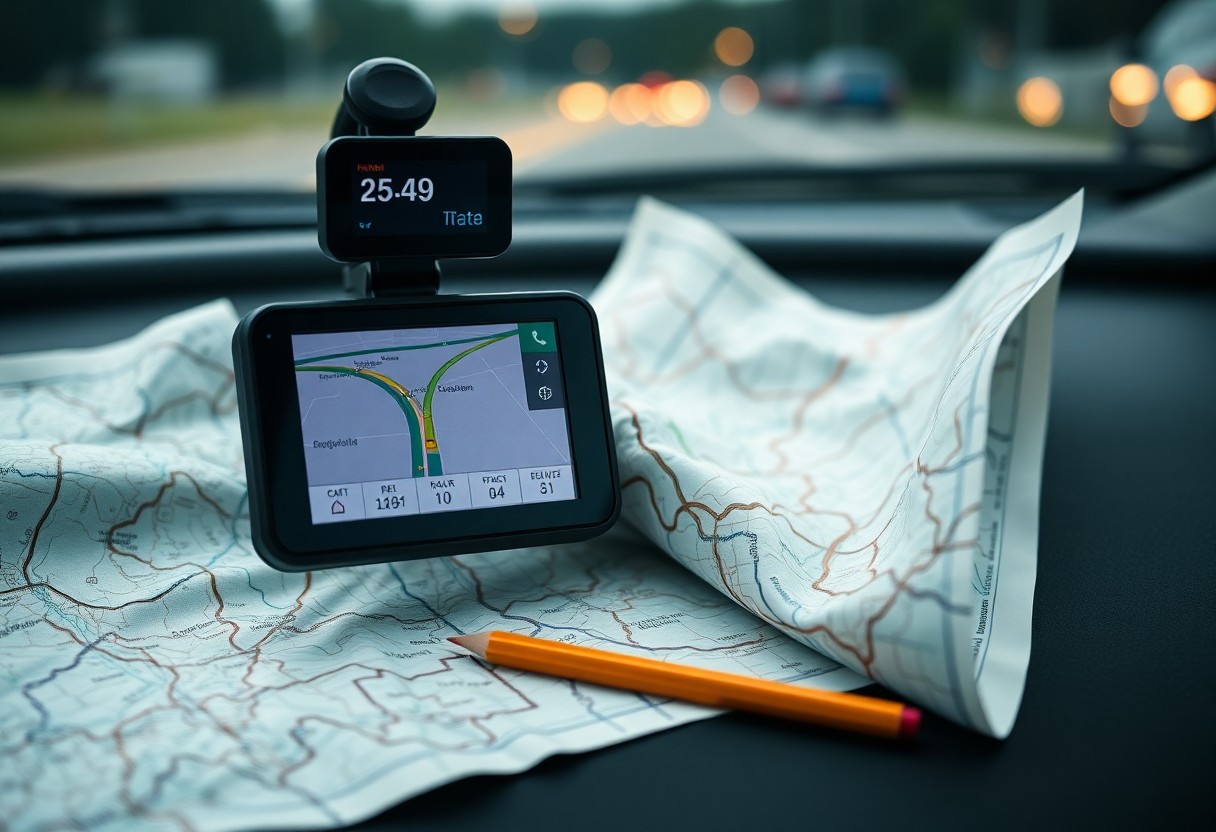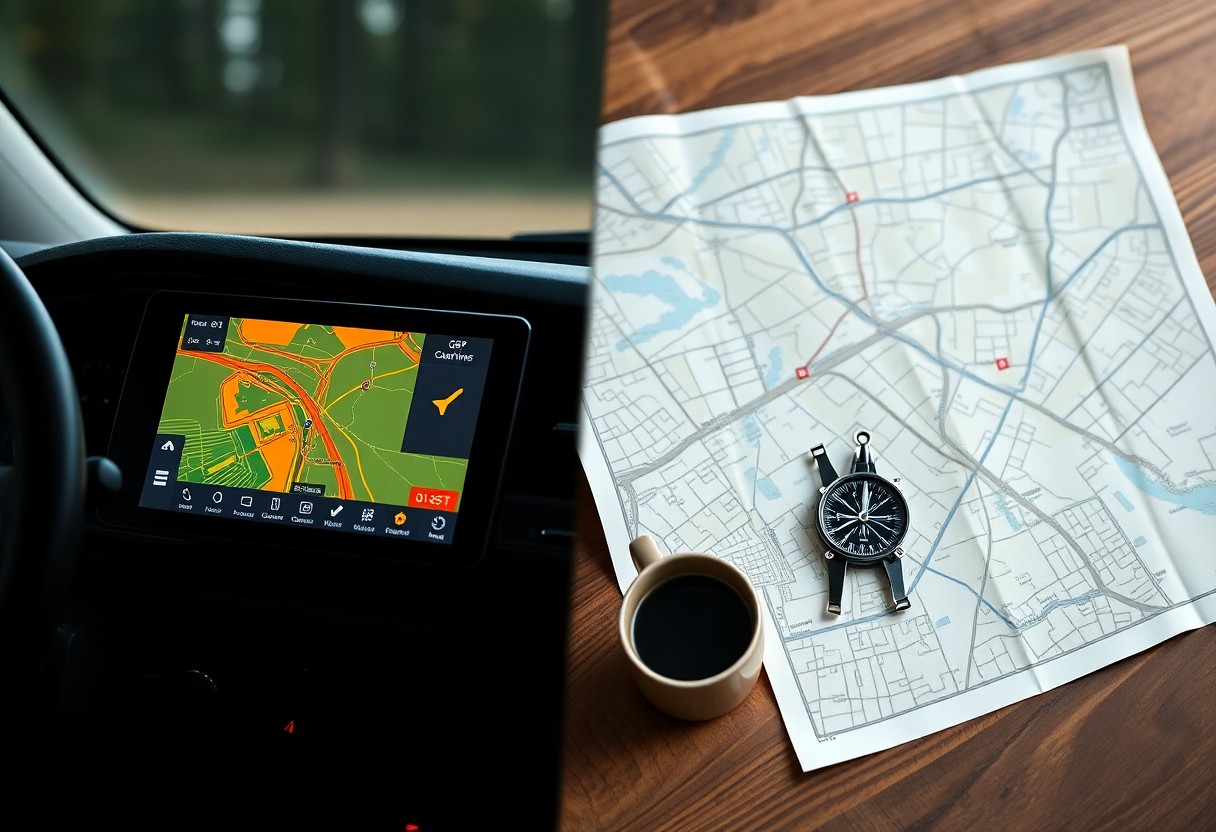You may often find yourself debating whether to rely on GPS technology or traditional paper maps for navigation. Each method has its own advantages and pitfalls. While GPS provides real-time updates and convenience, it can sometimes lead you astray with inaccurate data or signal loss. On the other hand, paper maps offer a tangible reference that doesn’t rely on batteries or signals but lack immediate updates and detail. In this post, we will explore which navigation method might earn your trust more deeply.
The Evolution of Navigation: From Cartography to GPS
Navigation has dramatically transformed over the centuries, evolving from intricate paper maps sketched by hand to sophisticated GPS technology that guides you with remarkable precision. Early explorers relied on celestial navigation and basic cartography, where maps served both as artistic expressions and practical guides. Today, satellite systems provide real-time data that reshapes how you perceive distance and direction, making navigation an effortless task in your everyday life.
Historical context of paper maps
Paper maps have a storied history, dating back to ancient civilisations such as the Babylonians and Greeks. Early representations often depicted local territories, drawn meticulously by hand. With the advent of the printing press in the 15th century, maps became more accessible, fostering exploration and trade. The 15th to 17th centuries marked a golden age of cartography, as navigators like Mercator created visual tools that would forever alter maritime and terrestrial travel.
The rise and adoption of GPS technology
The introduction of GPS technology in the 20th century revolutionised navigation. Originally developed for military purposes in the 1970s, it became widely available to civilians in the 1990s. GPS devices and applications provide real-time positioning data, allowing you to pinpoint your location with remarkable accuracy. As smartphones became commonplace, GPS integrated seamlessly into daily life, transforming how you navigate, plan routes, and explore new places.
By the turn of the 21st century, GPS usage soared, with an estimated 75% of Americans owning a GPS-enabled device by 2007. This shift not only simplified navigation but also influenced urban planning, logistics, and travel behaviours. You now have access to advanced features like traffic updates and alternative route suggestions, further enhancing your experience. The GPS revolution has made exploring the world more accessible than ever, changing perceptions of distance, time, and adventure.

Trustworthiness Unpacked: The Reliability of GPS vs Paper Maps
Your choice between GPS and paper maps can heavily influence how confident you feel navigating unfamiliar territories. GPS technology is often seen as cutting-edge, boasting real-time updates and detailed routes. However, it’s important to consider issues such as signal loss, battery depletion, and reliance on up-to-date mapping data, which can sometimes lead to twists and turns you didn’t anticipate. In contrast, traditional paper maps offer a comprehensive overview of your surroundings, unshackled from the whims of technology and remote signals. Each format has its strengths and weaknesses, shaping your trust in the tools at hand.
Evaluating GPS accuracy and potential pitfalls
The accuracy of GPS can be impressive, pinpointing your location within a few metres. Nonetheless, environmental factors like tall buildings, dense forests, or poor weather can interfere with signal reception, leading to potential pitfalls during your journey. Moreover, if you’re in an area with outdated maps or unregistered roads, reliance on GPS might misdirect you completely. Regularly updating your navigation app doesn’t guarantee flawless guidance, highlighting the importance of staying aware of these potential shortcomings.
The enduring reliability of paper maps
Paper maps remain a stalwart choice, particularly when navigating in remote areas devoid of mobile signal. Their static nature allows for reliable, consistent information that doesn’t falter under environmental conditions. Unlike GPS, paper maps offer a larger view, facilitating a comprehensive understanding of the landscape. You can spot alternative routes, natural landmarks, and even local amenities absent from digital guidance, making them indispensable in certain scenarios.
The enduring reliability of paper maps lies in their simplicity and independence from technology. When you unfold a paper map, you gain an instant overview of the terrain, allowing you to visualise your journey in the broader context. No battery life concerns or signal drops mean that you can trust your map amidst mountain ranges, in deep forests, or during emergencies when electronics fail. Furthermore, reading and interpreting a map enhances your spatial awareness and navigational skills, which can only enrich your overall travel experience. In an age dominated by screens, having a tangible resource like a paper map can bring a sense of security and adventure that many find irreplaceable.
User Experience: Personal Preferences and Practicality
Your experience with navigation tools often boils down to personal preference and practicality. Some individuals lean towards GPS technology for its real-time updates and ability to quickly reroute in the event of obstacles, while others cherish the simplicity and reliability of paper maps. Adapting to your journey’s demands, whether it’s a leisurely drive through the countryside or a quick urban commute, influences which tool feels right.
Convenience and accessibility of GPS
The convenience of GPS cannot be overstated. Offering instant directions, real-time traffic updates, and voice-guided navigation, it caters to your need for efficiency. With a few taps on a smartphone, you can access routes, explore nearby points of interest, and even share your location with others, making it a highly accessible option for most travellers.
The tactile experience of reading a paper map
Navigating with a paper map offers a unique tactile experience that many find rewarding. The physical act of unfolding the map connects you to your surroundings in a way that screens cannot replicate. You gain a sense of scale and geography, allowing you to grasp the layout of the area more intuitively while appreciating the artistry often involved in cartography.
This tactile experience of a paper map fosters a special connection to your journey. You’re not just following a line but engaging with every detail, from the contours of hills to the names of cities that come alive through print. While it might take a little extra time to pinpoint your exact location, this interaction can enhance your understanding of the route and create a deeper appreciation for the landscape you traverse. Unplugging from modern technology during your travels may also bring about a sense of adventure and discovery, allowing you to find hidden gems that GPS might overlook.
The Intersection of Technology and Tradition: When to Use Each
Deciding between GPS and paper maps often depends on the specific circumstances you find yourself in. Each tool offers distinct advantages that can enhance your navigational experience. A blend of technology and tradition can maximise your journey’s efficiency and ensure you’re well-prepared for whatever you encounter on the road.
Situations favouring GPS reliance
In urban areas with complex road networks, real-time traffic updates provided by GPS can save you significant time. The ability to reroute instantly in response to congestion or road closures enhances your travel efficiency and keeps you on track. Additionally, GPS systems often come equipped with points of interest, enabling you to discover nearby restaurants, gas stations, or attractions effortlessly.
Scenarios where paper maps excel
Paper maps shine in regions where GPS signals are weak, such as remote areas devoid of cellular coverage. Furthermore, they provide a bird’s-eye view of the terrain, helping you understand topographical features that might not be evident on a screen. You can pinpoint scenic routes or alternative paths that a GPS might overlook, leading to a more enriching travel experience.
In fact, certain outdoor activities, like hiking or camping, necessitate the use of paper maps. They allow you to grasp local features, identify elevation changes, and navigate more effectively in wilderness conditions. Unlike GPS, paper maps don’t depend on battery life or network connections, making them invaluable when you’re out of reach of modern technology. Plus, the tactile experience of unfolding a map and tracing your route can enhance your connection to the landscape, making every journey more memorable.
Perspectives from the Field: Insights from Adventurers and Navigators
Fieldwork can paint a revealing picture about the reliability of GPS versus paper maps. Adventurers and navigators often encounter situations where their choices directly impact their journeys. Interviews with seasoned explorers uncover the balance between technological reliance and traditional skills, illuminating the inherent strengths and weaknesses of both navigation methods in a variety of conditions.
Testimonials from seasoned travellers
Seasoned travellers frequently share anecdotes highlighting the unpredictability of GPS technology. Many have experienced instances of signal loss in remote areas, leading them to rely on their trusty paper maps. One traveller recounted a trek through the Highlands, where sudden mist rendered their GPS useless, but the weathered map proved invaluable for navigating treacherous terrain.
Professional opinions from navigators and explorers
Professional navigators often advocate for a hybrid approach, balancing the use of GPS with paper maps and compasses. They emphasize that while GPS provides real-time data, paper maps offer a broader perspective that can enhance spatial awareness and context during expeditions. For instance, ocean navigators assert that traditional methods are important for long journeys, citing that reliance solely on electronic devices can be perilous if the technology fails.
Many navigators stress the importance of understanding fundamentals, such as reading a map and using a compass, alongside modern technology. Renowned explorer Sir Ranulph Fiennes has stated that “no technology can replace the intuition and skills developed through traditional navigation.” Furthermore, data from the Royal Institute of Navigation reveals that 70% of navigators believe a solid grasp of paper map reading is important for anyone wanting to navigate effectively, particularly in uncertain environments where GPS devices may falter.
To wrap up
Summing up, when deciding between GPS and paper maps, you should weigh their respective advantages and drawbacks based on your personal preferences and needs. While GPS offers convenience and real-time updates, paper maps can provide a more comprehensive understanding of your surroundings and don’t rely on technology. Ultimately, your choice may depend on the situation at hand and your comfort level with each method, so consider incorporating both into your navigation toolkit for the best results.
